Customer Services
Copyright © 2025 Desertcart Holdings Limited
Desert Online General Trading LLC
Dubai, United Arab Emirates



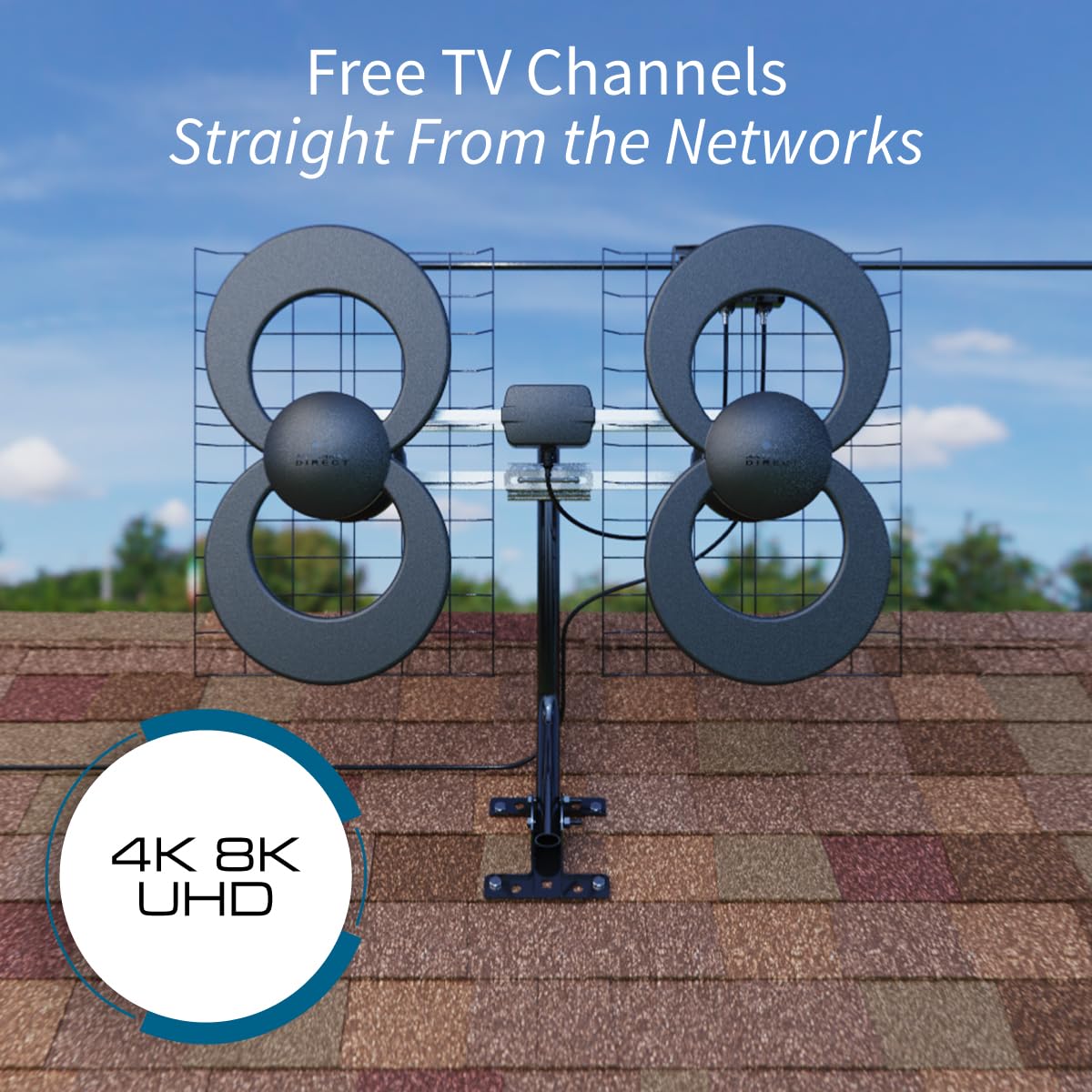

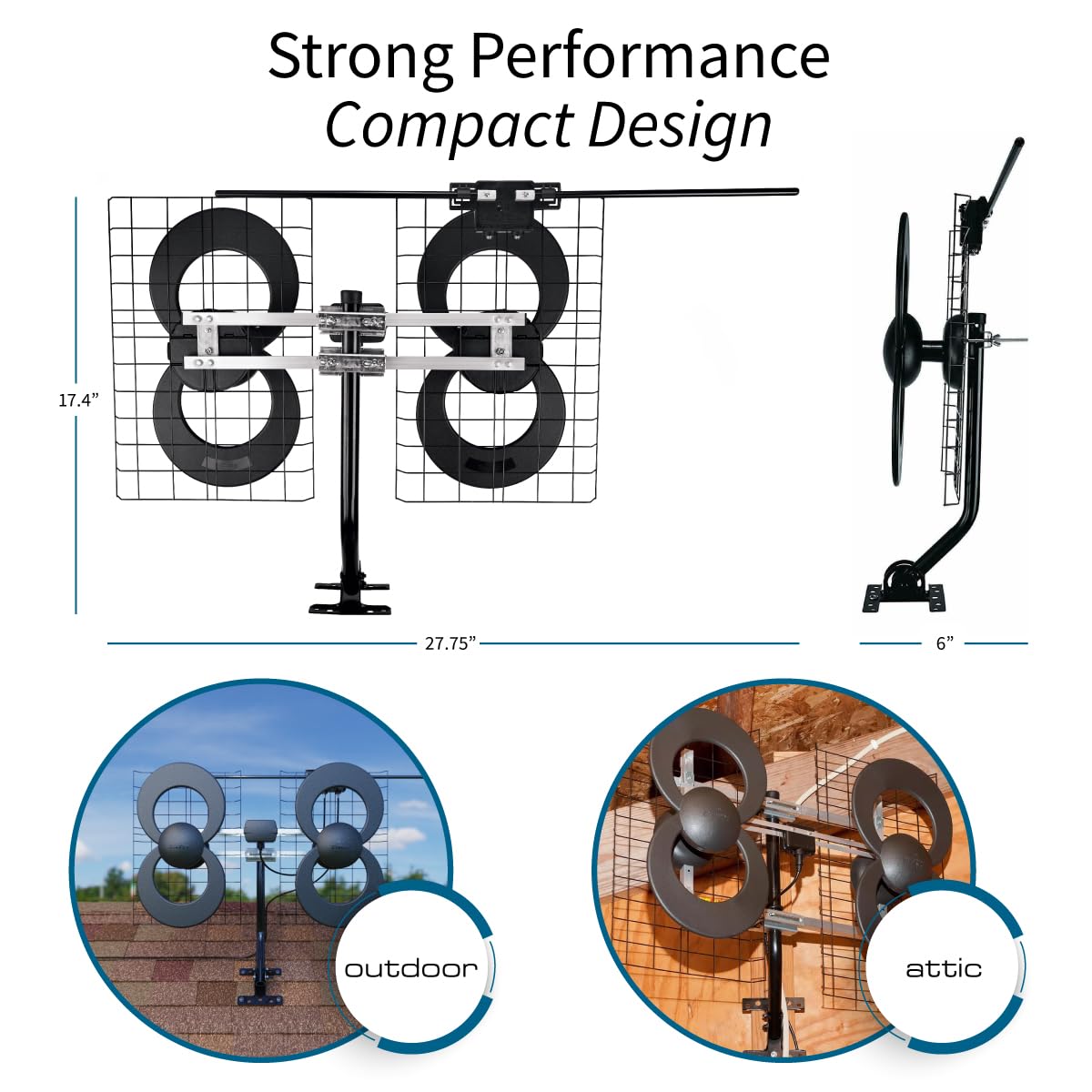

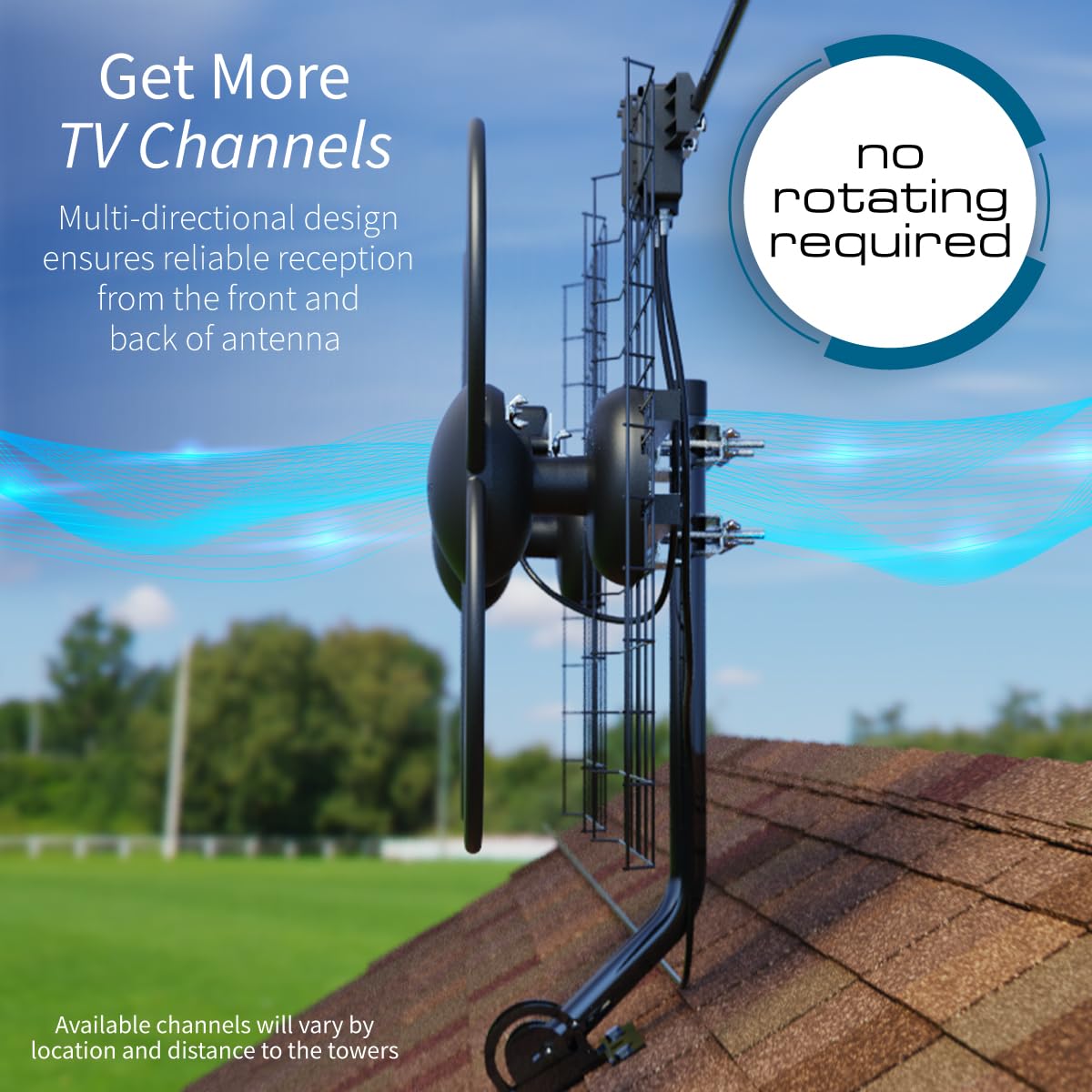

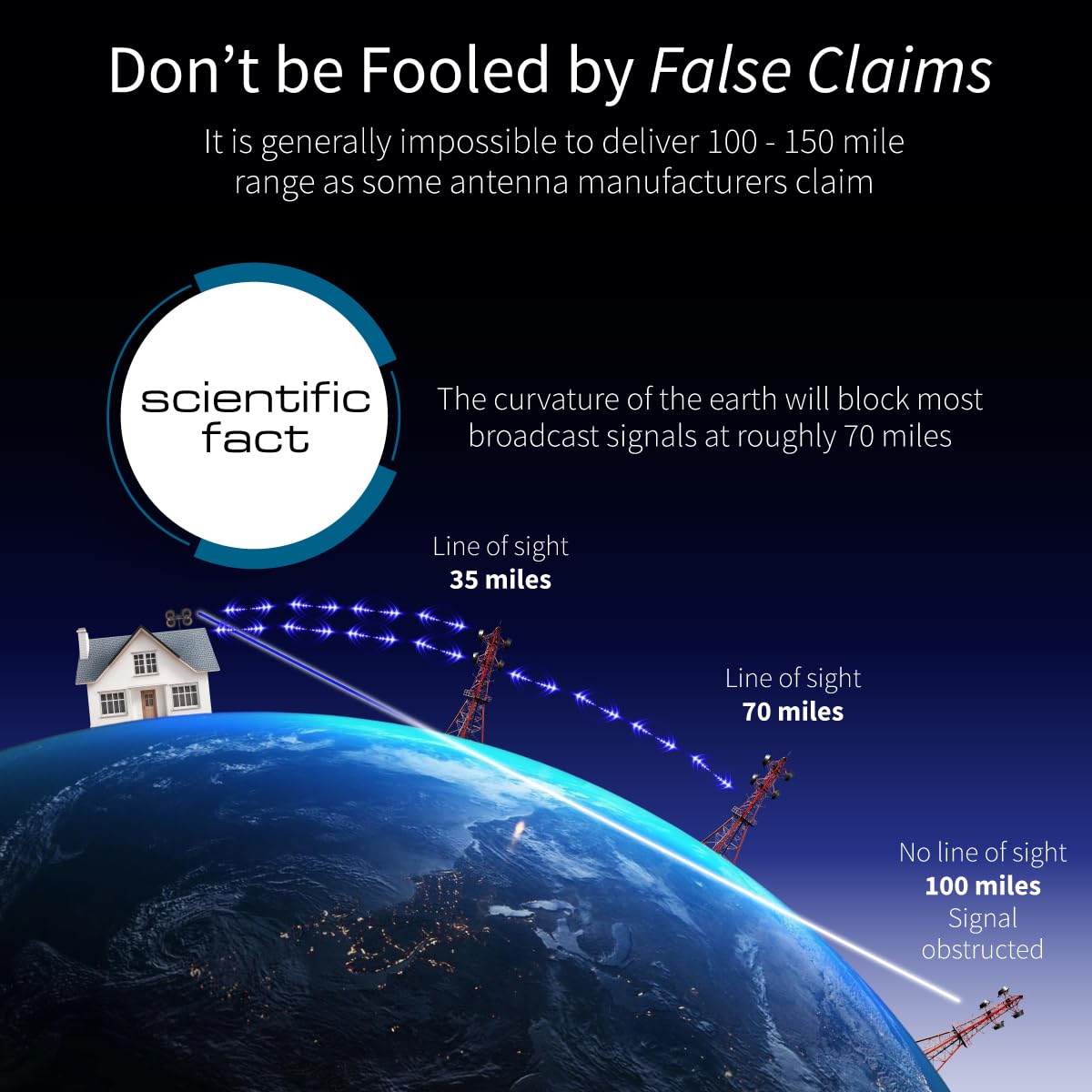
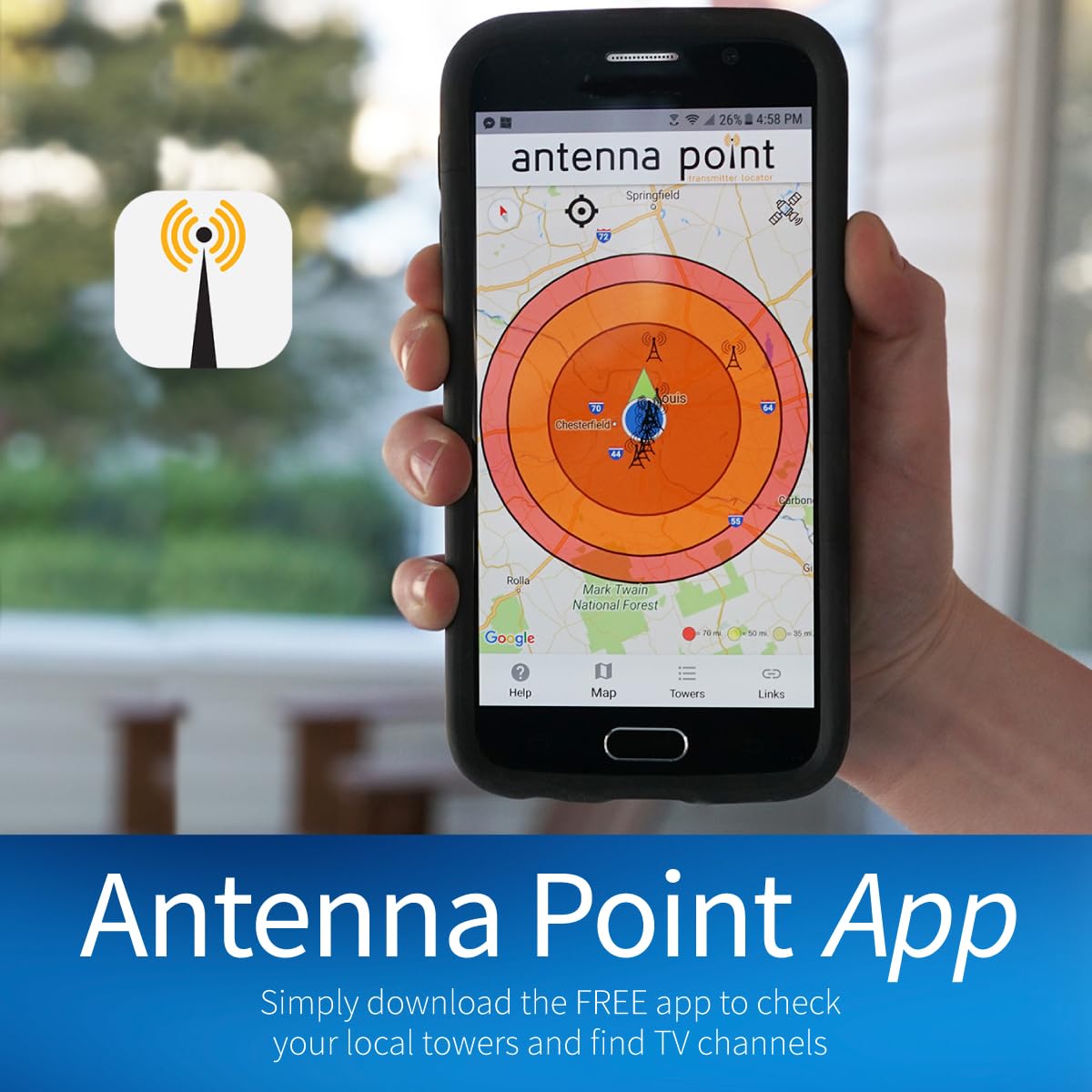

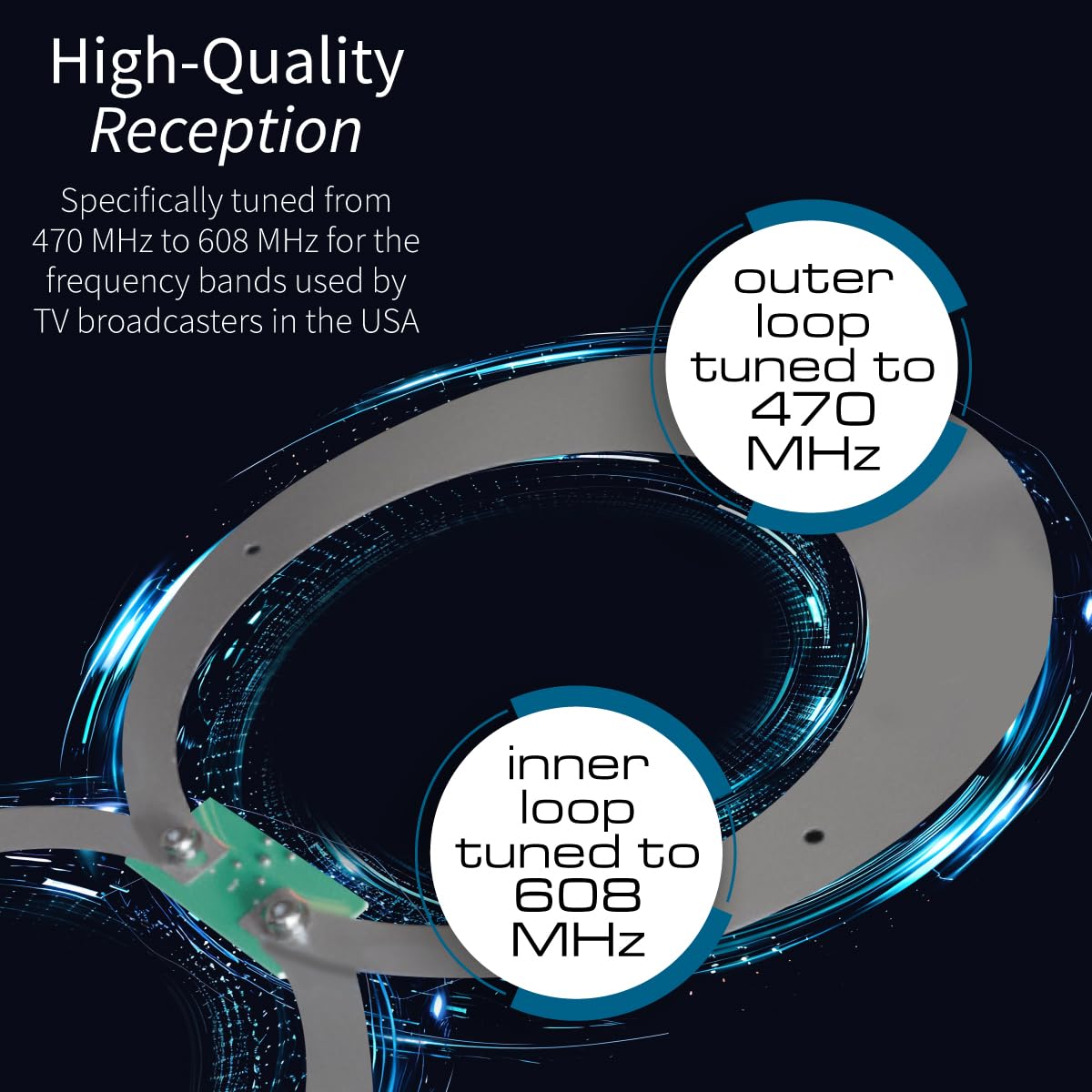
📡 Elevate your TV game—cut the cord, not the quality!
The Antennas Direct ClearStream 4V is a high-performance indoor/outdoor TV antenna featuring four patented loops for superior signal reception up to 70+ miles. Designed for multi-directional use, it supports NEXTGEN TV and ultra-high-definition formats including 4K and 8K UHD. Built with durable materials and a versatile 20-inch pivoting mast, it ensures easy installation and reliable, interference-free viewing without any internet connection.

| Brand Name | Antennas Direct |
| Item Weight | 4.1 pounds |
| Product Dimensions | 27.8 x 6 x 17.4 inches |
| Item model number | C4-V-CJM |
| Is Discontinued By Manufacturer | No |
| Color Name | Black |
| Special Features | Dual Band, Full HD, High Gain, Long Range, Multidirectional |
| Impedance | 75 Ohm |
S**R
Great antenna, but make sure it is great for you first.
This antenna worked great for my location, and I was able to pick up 70 channels. I was able to mount in my attic and pick up the expected stations. In my area, the UHF channels are primarily in single direction, while the VHF stations are spread out. I was also lucky that the stations are located so I can point out the side of my house instead of through the roof. Rather than mounting the VHF antenna on the grid, I used some spare PVC pipe and zip ties to point it in a direction that worked best for the VHF stations. As you can see in the photo, I mounted the antenna upside down to get the more length out of the included coax between the the UHF and VHF antennas (I would not do this outside).All that said, this may not work in your situation. First check on the rabbitears.info website to see what stations and what power levels you have at your location. As noted, most of the UHF transmitters are in the same direction about 35 miles away, so it worked really well for me. The major stations have very strong signal strength/quality according to my TV tuner, and I do not see any drop outs. The website tells you the signal margin for the stations -- the lower the number, the less likely you are to pick it up. The lowest power station I picked up was 5dB signal margin, with the antenna pointed at it. There was another station listed in the same direction with the same signal margin, but I could not pick it up -- the rabbitears site, may be slightly out of date (but not as bad as TVfool). I may have been able to do better with a roof mount. If your area has poor signal margin and stations spread out in multiple directions, this may not be for you. If the signal margin is good, then you can use the direction on the website to help point the antenna towards the transmitters. (Note: I was looking at TVFool, but as of Sept 2022, the information in my area is out of date, with many stations listed on the wrong RF channel).With the stations, you'll want to note the difference between VHF (RF channel 2-13) and UHF (RF channel 14+), and the difference between RF channel (what the frequency the channel actually on) and display channel (what shows up on your TV). Your local NBC 8, might really be transmitting on RF channel 25. This is important for pointing your antennas and figuring out if this will work for you. The UHF channels use the round antennas with the grid, and the VHF antenna is the separate part with two horizontal elements. You can attach the VHF antenna to the grid behind the UHF antennas, or you can mount in separately. The VHF antenna will give the best reception perpendicular to the elements (both in front and out back). Depending on your location, you may need to point it between two transmitters to pick up both, or you may only be able to pick up one or the other.As far as stations go, you'll see a lot of reviews of people who get dozens of channels -- I picked up 70. However, you'll want to be realistic about what you are really getting. The major networks will typically transmit in HD and may look even better than the compressed version you get on cable. They will also have some extra sub-channels that are in standard definition. These can be hit or miss. Some of them look pretty good/sharp, while others are overly compressed and look like a blurry old VHS tape. This is on the TV station, not the transmitter -- with digital TV you either pick up the station or you don't (with a small part in between where it is blocky/jumpy). Beyond quality, there is content. Out of the 70 stations I pick up, many of them don't interest me personally -- I don't watch the 5 shopping channels I pick up. I also have several duplicate sub-channels, so those don't really count. So if you are thinking about cutting the cable cord, take a look through the websites of the channels you are likely to pick up and see if they are really of interest. You might really be left with PBS (plus a couple of subchannels), the major networks (ABC, NBC, CBS, FOX), then a bunch of things you may or may not watch depending on interest (ION, CW, ME-TV, GRIT, Bounce, Defy, COMET, LAFF, QVC, HSN).
S**C
Good Compact Antenna
Update 3 May 2025: The Fox local channel 45 is in and out, not reliable. This is a change from previous experience. Reception of more distant channels is better with cloud cover. Channel 32 Howard University is more frequently coming in well. Channel 49 Lancaster (Lighthouse christian channel) is received at times with clouds or very late night. Channel 2 is pixelated at times, along with its subchannels. Channel Master filters (5G and FM) either singularly or both installed did not make a difference, so the problems are not electronic interference related. Channel 45 is received if a 2nd antenna is placed in the window at the ground floor level (go figure?). It could be we have multi-path interference in the attic antenna. Still overall a solution to the high priced cable channels but limited content. Savings are about $150/month if you include the FIOS internet bill. Too bad ATSC3 is not working out, it could solve some possible multi-path issues.Update 2 June 2023: Bought a second antenna. The intent is to receive stations in different directions using 2 antennas. Lengths of all coaxial cables were matched. Placing #2 perpendicular to #1 caused stations to drop out, assumed to be multi-path issues. Clearing obstacles in the attic helped reception for UHF channels, VHF is less sensitive to line of sight issues such as obstacles. Placing the antennas along the same line of sight but antiparallel did not create station dropouts, but did not pick up any additional stations with the possible exception of Channel 10 Philadelphia at 68 miles (so far just a hint). Channel 10 is approximately opposite in direction to the Baltimore towers but much further. When the 2nd antenna was perpendicular pointing SE, a few Salisbury, Maryland low power stations occasionally appeared. No Dover, Delaware stations showed up. Channel 7 DC at 56 miles will appear on occasion, as well as on occasion Channel 32 (Howard University). The usable range of this antenna in the attic (no insulation above the floor, siding and shingle roof) is about 40 miles but dependent on season (leaves), weather conditions, time of day, and day of the week. The variation is only evident on the channels beyond the Baltimore stations, so at 22 miles the antenna is now stable in the attic at all times so far for both VHF and UHF stations that are in the general direction of the antenna pointing.Update June 2023: With the trees now having leaves, the reception has been degraded a bit. Baltimore 2-1 is sometimes pixelated now. This is a UHF station, Baltimore 11-1 and 13-1 are VHF and do well, despite the single dipole attachment this antenna comes with. I may try to couple the antenna with a multi-dipole larger array. This antenna focuses on UHF and throws in a single dipole for VHF. UHF does need line of sight, so despite the 4 UHF loops of this antenna and the attenuation of the attic wall the UHF presents problems. I ordered another to place at 90 degrees from the first in the attic, will see how it goes with multi-path interference. The Lancaster channel 8-1 is usually not watchable now, but do not need it. I will try to lock in the Daystar channel, which is approximately perpendicular direction from the Baltimore towers. There is also Dover Delaware, but that will be a long shot. Leaves do make a difference.This antenna is fairly compact and relatively easy to install indoors in an attic. I attached it directly to a 1x5 which was then attached horizontally to 2x4 truss segments in the attic without a mast. I attached the VHS dipole to the cage as suggested. The house faces southeast, so the antenna ended up facing southwest in the direction of the primary Baltimore stations. In Bel Air, we are about 22 miles from that tower. The signal is good and stable for the big 4 stations and MPT 67. Lancaster PA 8 is ok but slightly unstable. According to rabbitears.info, that tower is about 40 miles. This is a bi-directional antenna, but Lancaster is not quite opposite the Baltimore tower direction.See rabbitears.info for stations and their strengths from Bel Air. The range of this antenna in the attic is about 40 miles for our location. Not sure this is fully weatherproof and rigid for outdoor use, given some of the steel and not so tightly secured wing nuts and paint that easily scraped off the cage. Overall, the stations available look very good so far, but we shall see when rain comes or when trees regain leaves this spring. We are at about 350 feet above sea level on relatively high ground for the local area. A list of available (free!) stations:Baltimore2-1 WMAR (ABC), Grit (2-2), Bounce (2-3), Mystery (2-4), CourtTV (2-5), Newsy (2-6)11-1 WBAL (NBC), MeTV (11-2), Story (11-3), Grio (11-4), QVC (11-5)13-1 WJZ (CBS), StartTV (13-2), Dabl (13-3), FaveTV (13-4)24-1 WUTB45-1 WBFF (Fox), 45-2 (MyTV), 45-4 (Charge)54-1 WNUV (CW), Antenna (54-2), Comet (54-3), Stadium (54-4), WNUV (54-11)Lancaster8-1 WGAL (NBC), MeTV (8-2), Story (8-4), TruReal (8-5), QVC (8-6)Havre De Grace49-1 WWDD (Daystar) Christian programming, shows up on channel 24-1 (24-1 WUTB is also picked up but never watched, the Samsung TV separates them despite the same channel number)Owings Mills67-1 (MPT), 67-2 (MPT2), 67-3 (MPT Kids), 67-4 (NHK World from Japan)22-1 MPT (Annapolis) a bit unstable but we have MPT 67 with a better signalSome of the channels are not very good but MeTV and AntennaTV are ok.
Trustpilot
2 days ago
3 weeks ago